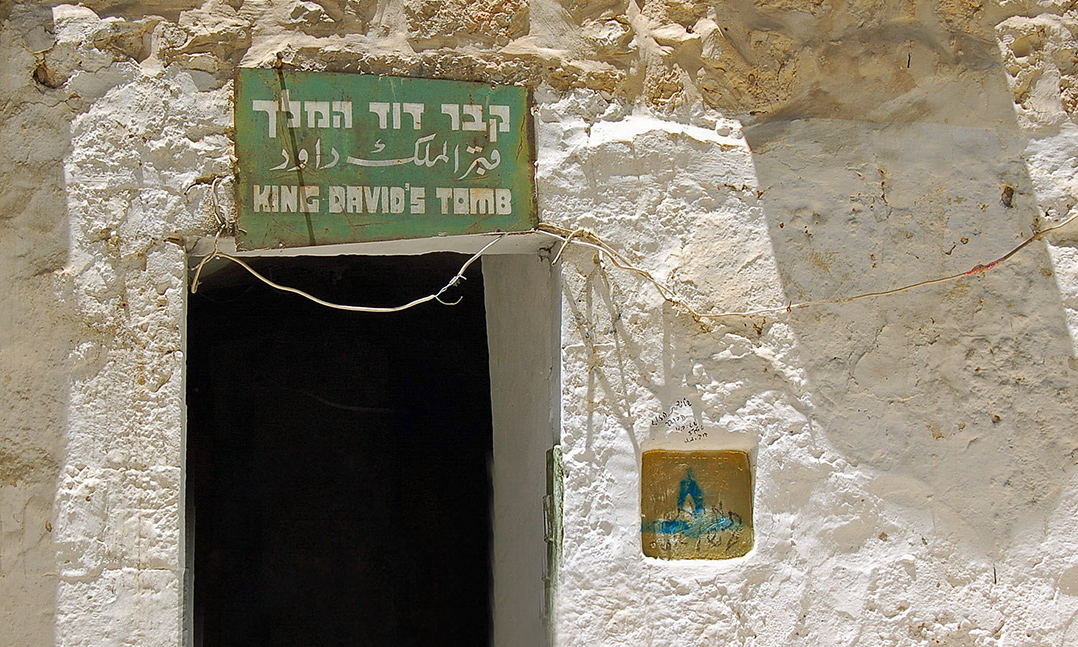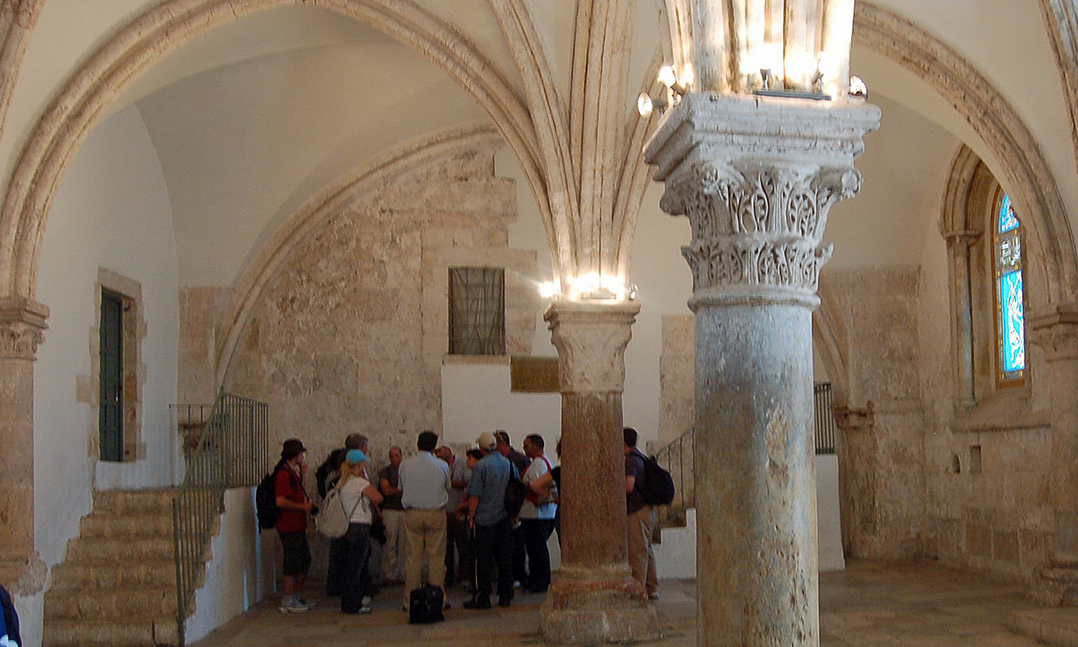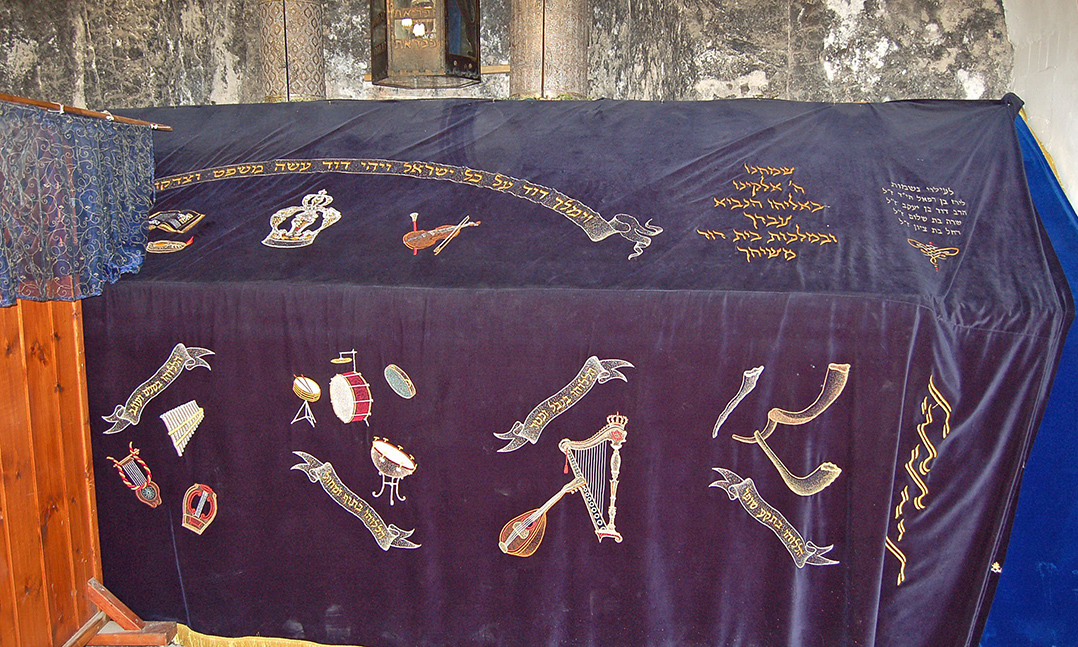Today, in our continuing tour of Israel and the Palestinian Territories, we visit a single building in Jerusalem that has significance for Jews, Christians and Muslims alike.
Mt. Zion is a hill in Jerusalem long associated with biblical King David. When the Crusaders captured Jerusalem in 1099, they discovered on Mt. Zion the ruins of a fourth-century church that had once been a synagogue. Muslim residents repeated stories that the synagogue was built over the tomb of King David. On the other hand, Christian residents said the church was associated with Jesus’ last meal with his disciples in the so-called Upper Room.” So, the Crusaders erected the Church of St. Mary of Zion to honor both traditions. An empty stone box in a first-floor room symbolized David’s tomb and a larger space above was associated with the Upper Room. When the Ottoman Turks gained control of Jerusalem, they added a minaret to the building and converted the upper room into a mosque honoring David.
For about 800 years, Jewish residents of Jerusalem ignored claims associating the Crusader building with David because the Hebrew Scriptures say David was entombed in the “City of David,” hundreds of yards to the east. After the 1948 war, Jordan barred Jewish access to that and other sites in Jerusalem. The tiny room with the stone box was one where Jews could gather to pray. So, the box was covered with blue velvet embroidered with representations of musical instruments and Hebrew text proclaiming, “David, the king of Israel lives forever.” A small sign over the entrance proclaimed “King David’s Tomb” in English, Hebrew and Arabic.
Today, Jews pray in King David’s Tomb on the first floor, Christians pray in the upper room and Muslims pray on the roof. No one cares if David is really in his tomb.







